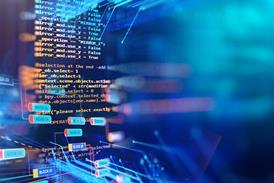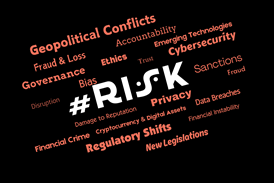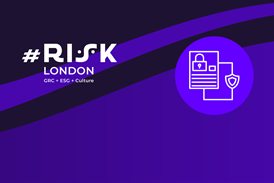All Feature articles – Page 14
-
 Feature
FeatureCOVID-19 FOCUS: Compliance, cloud migration and securing the “new normal”
As remote working looks set to become the new normal, businesses need to ensure their corporate information and data protection is secure. In the first in a series of Covid-themed articles this week, Andy Beverley outlines some of the key considerations.
-
 Feature
FeatureBrazil’s new data protection regime
As the LGPD finally came into effect last month, PrivSec Report explores the new law and the impact it could have on the Brazilian data protection ecosystem and culture.
-
 Feature
FeatureIdentifying, verifying and authenticating customers – which tech options will you go for?
Know Your Customer rules are tightening but bank customers increasingly want fast sign-up and quick banking. FinCrime Report looks at some of the identification and verification technologies currently being used to prevent fraud and money laundering in an increasingly complex landscape while ensuring user experience remains positive.
-
 Feature
FeatureEnsuring security in the journey towards digital healthcare
There are more digital touchpoints in the healthcare systems we experience today than ever before.
-
 Feature
FeaturePreparing for the cybercrime challenge: tips from a former FBI agent
Few have witnessed the developments in cybercrime unfold over the past 20 years as closely as Jeff Lanza. The former FBI agent has followed the progression of white-collar crime since the 1980s and has seen first-hand how investigations went from being all about catching gangsters operating in the physical world, to catching online hackers in just a matter of years.
-
 Feature
FeatureFinCrime Job Focus: tell us about your role
Do you work in a field tackling financial crime? Don’t miss the chance to feature in one of FinCrime Report’s regular job focus Q&As.
-
 Feature
FeatureThree things to consider when securing multi-cloud environments
Public sector organisations are all at different points on the cloud transformation and digitalisation journey.
-
 Feature
FeatureSecurity: more than just “tech”
Ahead of this week’s Data Protection World Forum webinar, Building Security’s Influence in the C Suite, independent cyber security consultant Dr Emma Osborn highlights the importance of owning cyber risk at board level.
-
 Feature
FeatureDon’t Lift and Shift: Evolve
At July’s Last Thursday in Privacy event, Sian John MBE, Microsoft’s EMEA / APJ director of cybersecurity strategy, gave companies transitioning to a cloud service model some food for thought. PrivSec’s Catherine Wycherley caught up with her to get some further insight.
-
 Feature
FeatureThe Great Digital Disruption: Adjusting to a New Normal in Cybersecurity
COVID-19 has forced societies, governments, businesses and individuals to suddenly rethink long-held practices and processes. This includes fundamental aspects of our lives, such as how and where we work, teach, learn, live and interact.
-
 Feature
FeatureThe Risks of Checkbox Compliance
A key principle of the GDPR is that personal data must be processed securely, using “appropriate technical and organisational measures” – the “security principle”. To meet this principle, organisations implement a variety of IT security technologies, all aimed at protecting information where it is stored and processed.
-
 Feature
FeaturePrivacy-by-design: The fundamentals of data protection
In May 2016, the protection of personal data became a fundamental right in the European Union. In safeguarding this right, the European Commission assesses and determines whether countries meet data protection standards.
-
 Feature
FeatureUK Data Protection Index: first findings published
Data protection professionals are calling out for more investment for internal resources, software systems and staff training, but only a quarter expect their budget to increase in the next 12 months, according to the findings of the first UK Data Protection Index.
-
 Feature
FeatureData Privacy Laws: Global View
Data privacy is the component of data security that is focused on the compliant handling of sensitive or personal data. It is inevitably interlinked with data security, as governments across the globe have set standards for how sensitive or personal data should be protected.
-
 Feature
FeatureSecurity Concerns over Contact Tracing Apps
When an individual is found to be infected with the coronavirus, the race is on to find those who they have come into contact with, as these people could be carriers or even be infected. This has led to hundreds of coronavirus contact-tracing mobile applications being developed worldwide and backed by various governments and national health authorities, as well as guidelines by the EU and special protocols developed by the two major smartphone OS vendors Apple & Google. In some places, the usage of such applications has been made mandatory for people who want to gain access into public spaces.
-
 Feature
FeaturePreparing for the ‘new normal’ in cyber security
The global coronavirus pandemic has added an enormous strain on employees’ ability to work remotely.
-
 Feature
FeatureGDPR in a post-Brexit world
A new transition period has begun in which the UK has until the end of December 2020 to negotiate a new relationship with the EU.
-
 Feature
FeatureArtificial Intelligence: addressing the risks to data privacy and beyond
As more companies are implementing Artificial Intelligence (AI) as a core part of their digital transformation, there is a requirement for boards to focus on the risks related to AI use of personal data and the potential bias and unpredictability in its output.
-
 Feature
FeatureGDPR: 2 Year Anniversary
The 25th May 2020 marked two years since the General Data Protection Regulation (GDPR) and the Data Protection Act 2018 came into force in the UK. The change in law saw the biggest change in data protection law in 20 years and gave the regulator, the Information Commissioner’s Office (ICO), the ability to impose much tougher sanctions and levy higher fines on organisations that fail to comply with data protection law.
-
 Feature
FeatureThe Cybercrime Trends and Challenges We Have Faced During COVID-19
It should come as no surprise that since the emergence of COVID-19 last year there has been a month on month increase in the level of malicious activities relating to the pandemic, with cybercriminals using it as a new hook to bait their unsuspecting victims. In actual fact, the overall level of cybercrime in general has not increased dramatically, but many threat actors have jumped at the opportunity to switch from existing lures to those relating to COVID-19.














